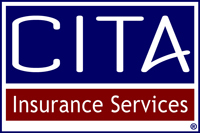-
Key Features in an E&O Insurance Policy for Registered Investment Advisors
Key Features in an E&O Insurance Policy for Registered Investment Advisors
09.01.2016As a registered investment advisor, you take your clients’ livelihoods into your hands each and every day. This is a major responsibility, as your actions can determine whether or not a client will be able to live comfortably through retirement. Because of this, clients can be especially critical of your actions with regards to their money, exposing you to potential errors and omissions (E&O) claims if your clients should lose their money on an investment that you recommended.
However, this does not just include your actions, but those of your employees as well. In choosing your professional liability policy, it is critical that the policy cover your employees as well in order to protect yourself and your financial advisement business from unnecessary risk.
What Is Employee or Administrative Coverage?
Particularly if you have a larger financial advisement business, you cannot handle every little detail on your own. Because of this, it is highly likely that you employ assistants who have to deal with clients in the course of their daily duties, like answering phones or sending emails on your behalf. In the event that an employee makes a mistake, you are still held responsible, as it is your business. If that employee’s mistake costs your client a lot of money, your E&O policy will extend to that employee to cover for the mistake.
Why Is Employee or Administrative Coverage Important?
Let’s look at an example of a situation in which you would need employee or administrative coverage. Let’s say you have a client who is nearing retirement. He has a portfolio of investments worth about $5 million. Because he is getting closer to retirement, he is no longer comfortable with the level of volatility in his portfolio and wishes to transfer some of that money to more stable investments. He calls your office and speaks with your assistant, who assures the client that she will pass along the message to you so that you can reevaluate his portfolio and advise him of the necessary changes.
However, later in the day, your assistant falls ill and must leave the office early. In doing so, she forgets to pass along the client’s message to you. Over the next few days, the stock market takes a drastic drop, reducing your client’s portfolio to about $3 million, a drop that would have been avoided if you had moved his assets to different investments. The client then sues you for your assistant’s mistake. Without employee coverage, your E&O insurance policy would not cover your claim, as it was your assistant and not you who made the mistake, leaving you to pay the loss yourself. If you did have administrative coverage, your insurance policy would be able to cover the claim, protecting you and your business.
How Can You Protect Yourself from These Types of Claims?
The best way to avoid these types of claims is to thoroughly investigate potential employees and only hire the best. In addition, part of the on-boarding of new employees should include extensive training on the importance of documenting every conversation, no matter how seemingly insignificant. Detailed documentation is your best defense in the event of E&O claims.
Any perceived negligence in this area on your part could result in your insurance policy not paying your claims. Even with employee coverage, it is important to instill into them the importance of attention to detail and how it could potentially affect your business. In the early stages of an employee’s career with you, you may need to supervise them more closely to ensure that their work meets your standards for documentation accuracy.
All information provided in this blog is for informational purposes only. The sources used are presumed accurate. CITA Insurance Services, Brown & Brown Program Insurance Services, Inc. and Brown & Brown, Inc. will not be liable for any errors, omissions, losses, injuries or damages arising from its display or use and will not assume responsibility for any misguided information. No guarantees are implied.
